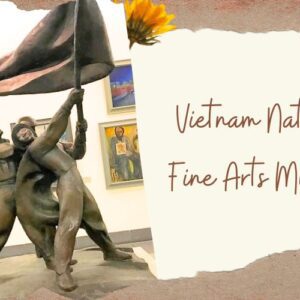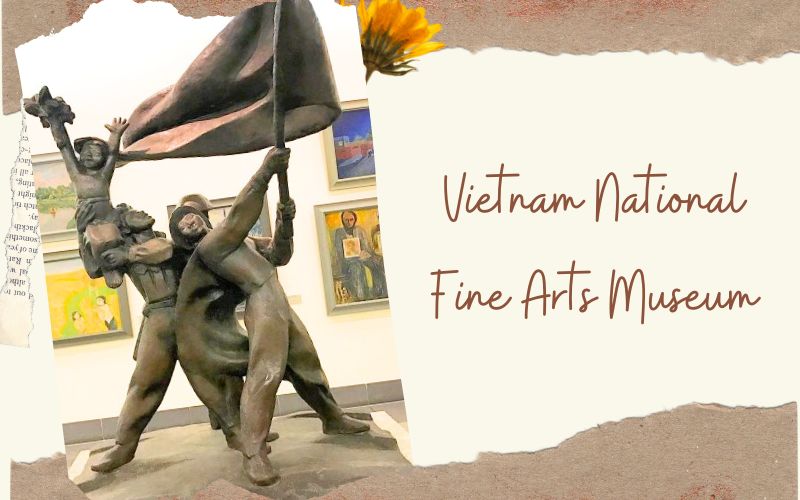
Vietnam National Fine Arts Museum in Hanoi has become a renowned and sought-after destination for tourists, consistently finding its place in travel itineraries. It attracts a steady stream of visitors, both locals and tourists, who flock to the museum daily to immerse themselves in the captivating journey through the history of Vietnamese art. The museum’s extensive collections, documents, and artifacts on display offer a comprehensive representation of the evolution of Vietnamese art, allowing visitors to gain a deeper understanding of its development over time. The Fine Arts Museum stands as a vibrant hub where art enthusiasts and curious travelers alike can engage with the rich cultural heritage of Vietnam.
Essential Information for Tourists
Location of Vietnam National Fine Arts Museum
The Vietnam Fine Arts Museum can be found at 66 Nguyen Thai Hoc Street, in the Ba Dinh district of Hanoi.
Opening hours and Ticket fees
Opening hours: The operating hours of the Vietnam Fine Arts Museum are from 8:30 a.m. to 5 p.m. every day, except Mondays and during the Lunar New Year holidays. It is advisable to check the museum’s schedule in advance, as it may have specific opening hours during holidays or for special events.
Ticket fees: Here are the revised ticket prices for the Vietnam National Fine Arts Museum:
- Adults: 40,000 VND/person.
- College/university students: 20,000 VND/person.
- Children between 6 and 16: 10,000 VND/person.
- Disabled and children under 6: Free admission.
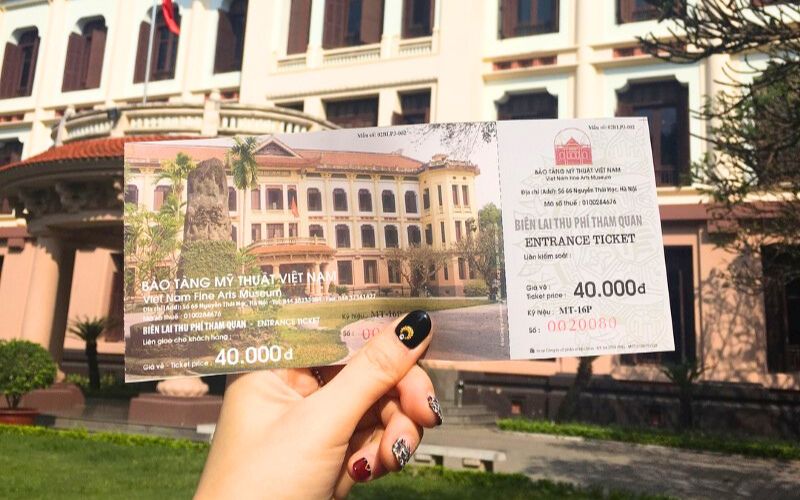
Entrance tickets for adults
Tips for Visiting the Museum
- Refrain from touching the exhibits: All the artifacts in the museum hold immense value and can be easily damaged by physical contact.
- Permit to photography and videography: It is recommended to experience the exhibits firsthand with your own eyes rather than solely relying on pictures.
- Consider taking a guided tour: To fully appreciate the art on display, it is recommended to either hire a guide or utilize a guidebook during your visit.
- Access Tour 3D audio service: Check out the museum’s official website to explore without the need for an in-person visit by accessing the Tour 3D audio service, allowing you to explore the museum’s exhibits and ambiance from the comfort of your device.
History of Vietnam National Fine Arts Museum
Established in 1966, the Vietnam Fine Arts Museum is a part of the Vietnam National Museums system. The primary purpose of the museum is to serve as a center for research, collection, preservation, and display of materials, artifacts, and classical artworks, while also promoting the cultural and artistic essence of Vietnam. Originally known as “Famile de Jeanne d’Arc,” the museum was initially a boarding school for the daughters of French officials throughout Indochina, reflecting the architectural style of other French structures in Hanoi from the late 19th to early 20th century.
Between 1957 and 1960, the building of the Vietnam Fine Arts Museum played a significant role as the headquarters for the Poland delegations in the War Oversight Committee to Vietnam. Following that, from 1960 to 1962, the premises provided accommodation for experts from the Soviet Union.
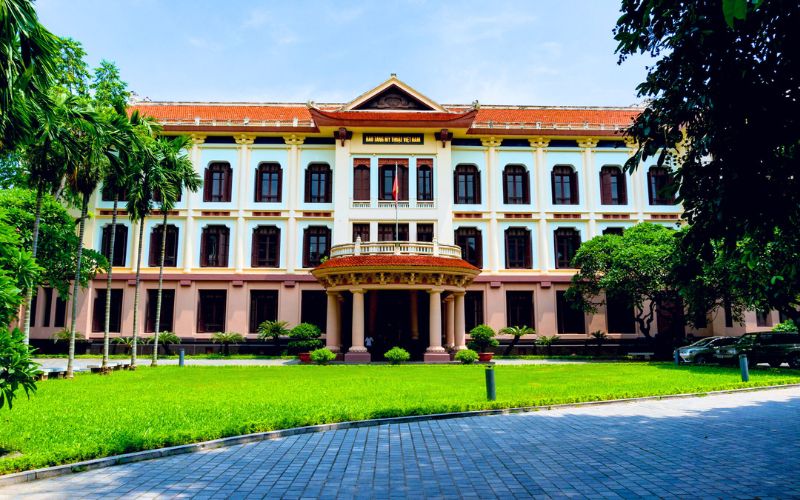
Vietnam National Fine Arts Museum
In 1962, the building underwent a thorough reconstruction to fulfill its new purpose as an art museum, dedicated to exhibiting exquisite Vietnamese paintings. This transformation was carefully executed by blending Western influences with traditional Vietnamese nuances, ensuring that the museum’s aesthetics and atmosphere aligned harmoniously with its revised title and mission.
The Vietnam Fine Arts Museum welcomed its first visitors in 1966, providing public access to an area spanning 4,200 m2, including a dedicated gallery space of 1,200 m2. Then, during the period from 1997 to 1999, the museum underwent an expansion in a total area of 4,737 m2, with more than 3,000 m2 specifically designated for exhibitions.
The Structure of the Vietnam National Fine Arts Museum
The Exhibition Space
With a rich and distinctive history, Vietnamese art has evolved over time, resulting in a remarkable collection of artifacts displayed at this museum. Currently, the Vietnam National Museum of Fine Arts houses an impressive collection of over 18,000 items, with 2,000 of them on permanent exhibition. These artifacts are categorized into various captivating themes, including national arts in Vietnamese households, arts from the Stone and Bronze Ages, arts from feudal dynasties, folk arts, handicraft arts, as well as contemporary and modern arts.
The museum features a permanent exhibition that encompasses a diverse range of topics. These include Prehistory and Early Fine Art, Art spanning from the 11th to the 19th century AD, Art from the Early 20th century AD to the present day, Traditional Applied Art, Folk Art, and Vietnamese Ceramic Art spanning from the 11th century to the 20th century.
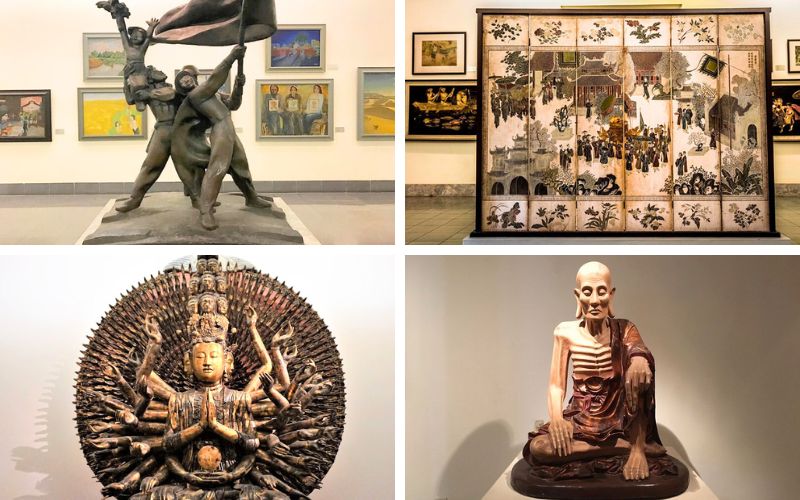
Some typical works were displayed in the museum
As wander through the Vietnam National Fine Arts Museum, you will find yourself immersed in a vast array of objects spread across 20 galleries on three floors. These exhibits beautifully showcase the creativity, aesthetic taste, and skill of Vietnamese artists spanning generations. From the vibrant patterns adorning traditional costumes to the intricate bamboo handicrafts and the serene yet captivating paintings, such as the renowned Dong Ho paintings, each piece exudes a distinct national identity. Bronze, stone, and wooden statues stand as magnificent symbols, reflecting the evolution of taste and beliefs over time.
In addition to the chronological arrangement, the museum’s storage area houses collections that are carefully preserved in separate chambers using various preservation techniques. These collections include National Treasures, Lacquer Paintings, Oil Paintings, Silk Paintings, Paper Paintings, Folk Paintings, Sculptures, and Vietnamese Ceramic Art from the 11th century to the 19th century. The Vietnam Fine Arts Museum is an invaluable treasure showcasing the visual arts of Vietnam and serves as a cultural destination for visitors from around the world.
The Creative Space for Children
On May 21, 2011, the Creative Space was inaugurated as part of the arts education program at the Vietnam Fine Arts Museum. Located on the third floor of the building, this space spans an area of 70m2 and offers a unique opportunity for children to immerse themselves in the world of folk and contemporary arts of Vietnam and beyond. Under the guidance of artists, sculptors, and educators, children visiting the museum can participate in eight interactive and creative activities, including freestyle drawing, puzzles, and statue shaping, among others. Through these activities, young visitors can nurture their artistic intelligence from an early age, fostering a love for the arts.
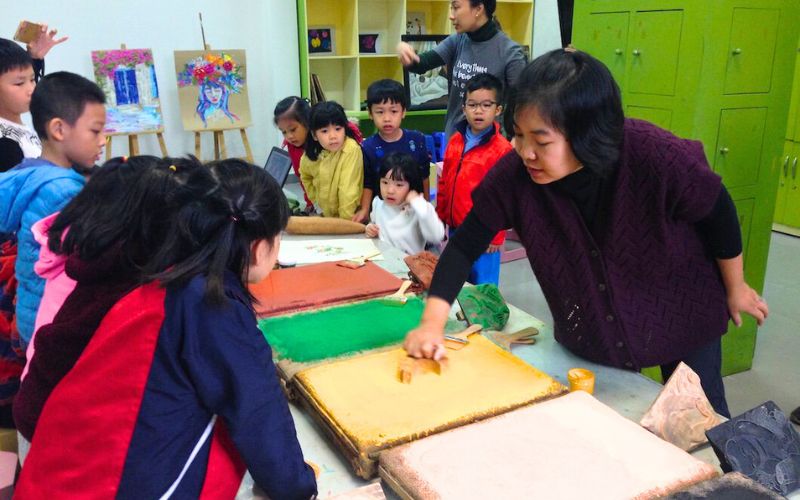
Children are having fun with statue painting
For those interested in participating in the experiential activities offered at this distinctive creative space, please take note of the following essential information:
- Ticket price: 50,000 VND/person
- Opening hours: 9 am to 11:30 am and 2 pm to 4:30 pm
- Target audience: Children between the ages of 5 and 15 years old
An Inviting Coffee Shop
In addition to its remarkable art displays, the museum also owns a delightful coffee shop situated within its grounds. This inviting spot offers a perfect retreat for a refreshing break, where you can enjoy cool beverages and delectable snacks. Take a moment to savor your lovely drinks, while admiring the artistic landscape that surrounds you. Make sure to capture the moment and check-in, as you relax and immerse yourself in the artistic ambiance of this unique museum.
Notable Landmarks to Visit near the Vietnam National Fine Arts Museum
Imperial Citadel of Thang Long
Recognized as a World Heritage site by UNESCO, this ancient citadel holds immense historical and cultural significance as the former political and military center of the capital city for over a thousand years. The citadel complex encompasses various structures, including palaces, temples, and ancient gardens, reflecting the architectural styles of different dynasties that ruled Vietnam. Visitors to the Thang Long Imperial Citadel can explore its vast grounds, marvel at the well-preserved relics, and learn about Vietnam’s fascinating history.
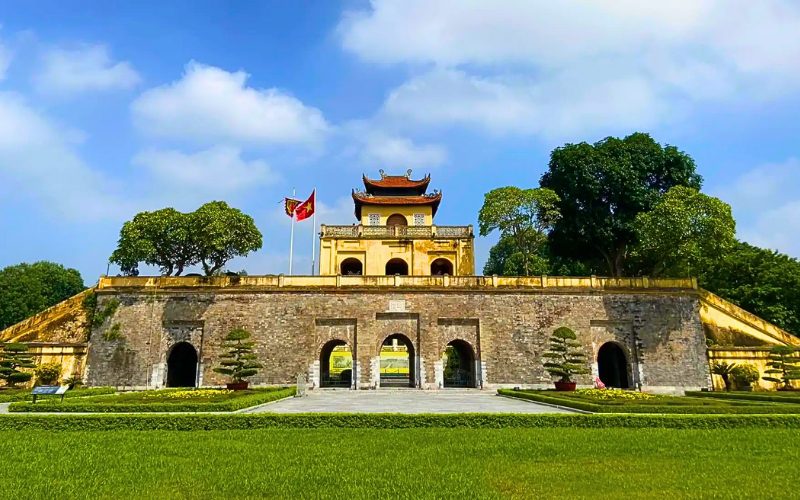
Imperial Citadel of Thang Long
Hanoi Flagpole
Located at Ba Dinh Square, in proximity to the Ho Chi Minh Mausoleum and the Presidential Palace, the Hanoi Flagpole stands as one of the remarkable landmarks in the capital. Its towering height and prominent position make it a significant symbol that embodies the spirit and history of the city. Coming here, you’ll have the opportunity to admire the flagpole’s grandeur and appreciate its deep significance to the Vietnamese people while exploring the surrounding area.
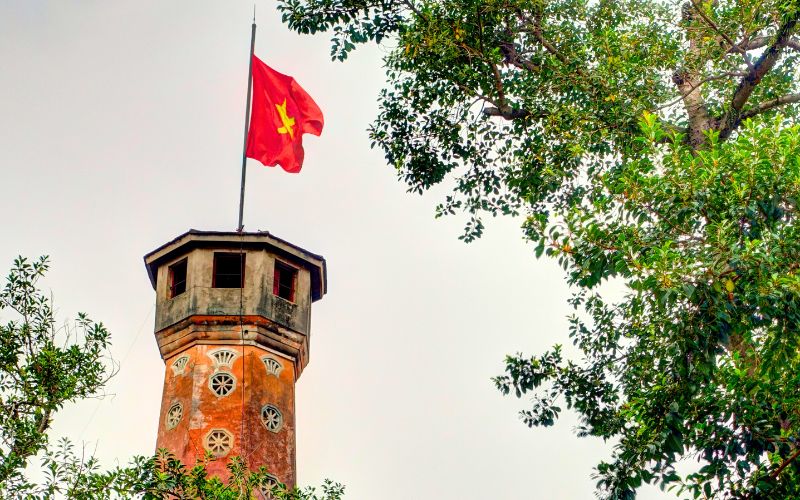
Hanoi Flagpole
Ho Chi Minh Mausoleum
Ho Chi Minh Mausoleum is a revered memorial located in Hanoi. It serves as the final resting place of Ho Chi Minh, the revolutionary leader and founding father of modern Vietnam. The mausoleum itself is an impressive structure, featuring a distinctive architectural style influenced by Lenin’s Mausoleum in Moscow. When visiting the Ho Chi Minh Mausoleum, visitors can pay their respects to Ho Chi Minh by viewing his preserved body, which lies in a glass case within the mausoleum’s central hall. The experience is marked by a sense of reverence and solemnity.

Ho Chi Minh Mausoleum
Vietnam Military History Museum
Vietnam Military History Museum is a notable institution that showcases the rich military history of Vietnam. Located around 650 m from the Vietnam National Fine Arts Museum, the museum offers visitors a comprehensive understanding of Vietnam’s military struggles and victories throughout its history. The exhibits include a wide range of artifacts, including weapons, uniforms, photographs, and documents, providing a glimpse into the country’s past military campaigns and the heroic efforts of its armed forces. Moreover, the museum also features outdoor displays of military vehicles and equipment. It serves as a valuable educational and cultural destination, allowing visitors to delve into Vietnam’s military heritage and gain insights into its significant historical events.
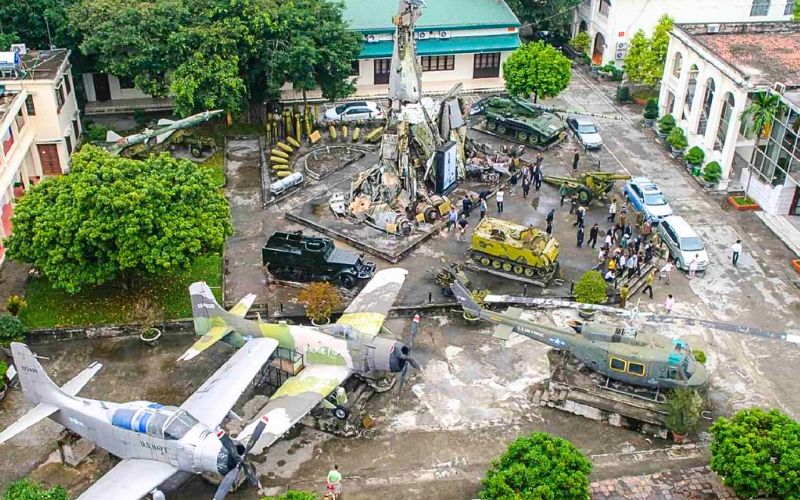
Vietnam Military History Museum
The Hanoi National Fine Arts Museum holds immense importance as a repository for the cultural and artistic heritage of Vietnam’s diverse ethnic groups. It serves as an ideal destination for art enthusiasts seeking a deeper understanding of Vietnamese culture through an artistic lens. Do not hesitate to contact us for immersing yourself in the beauty and tranquility of this remarkable destination in the heart of Hanoi.
